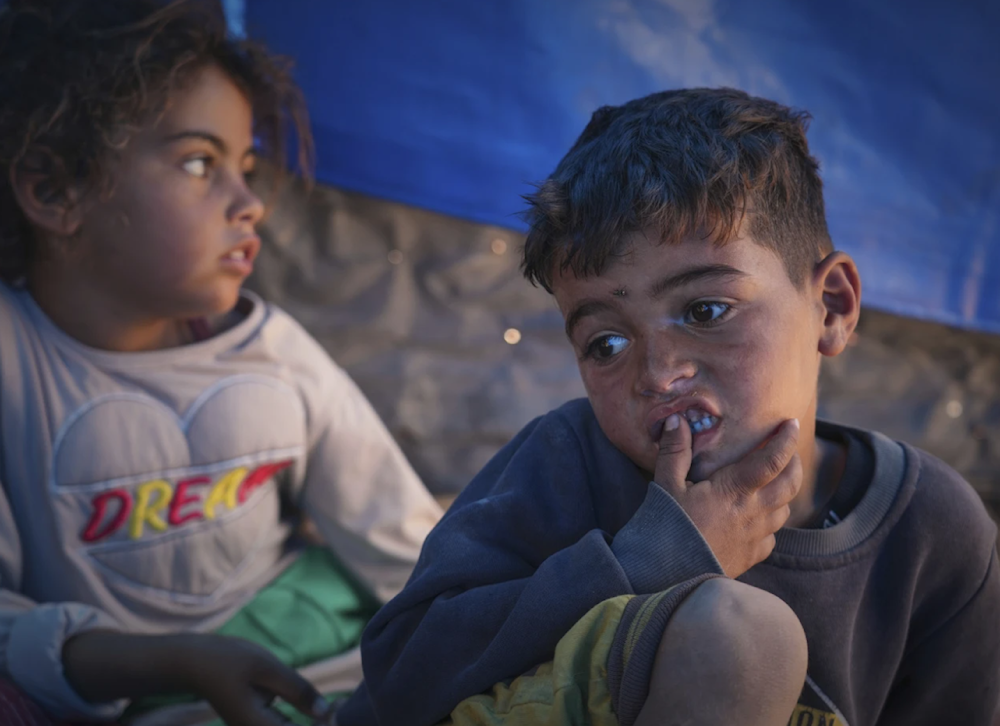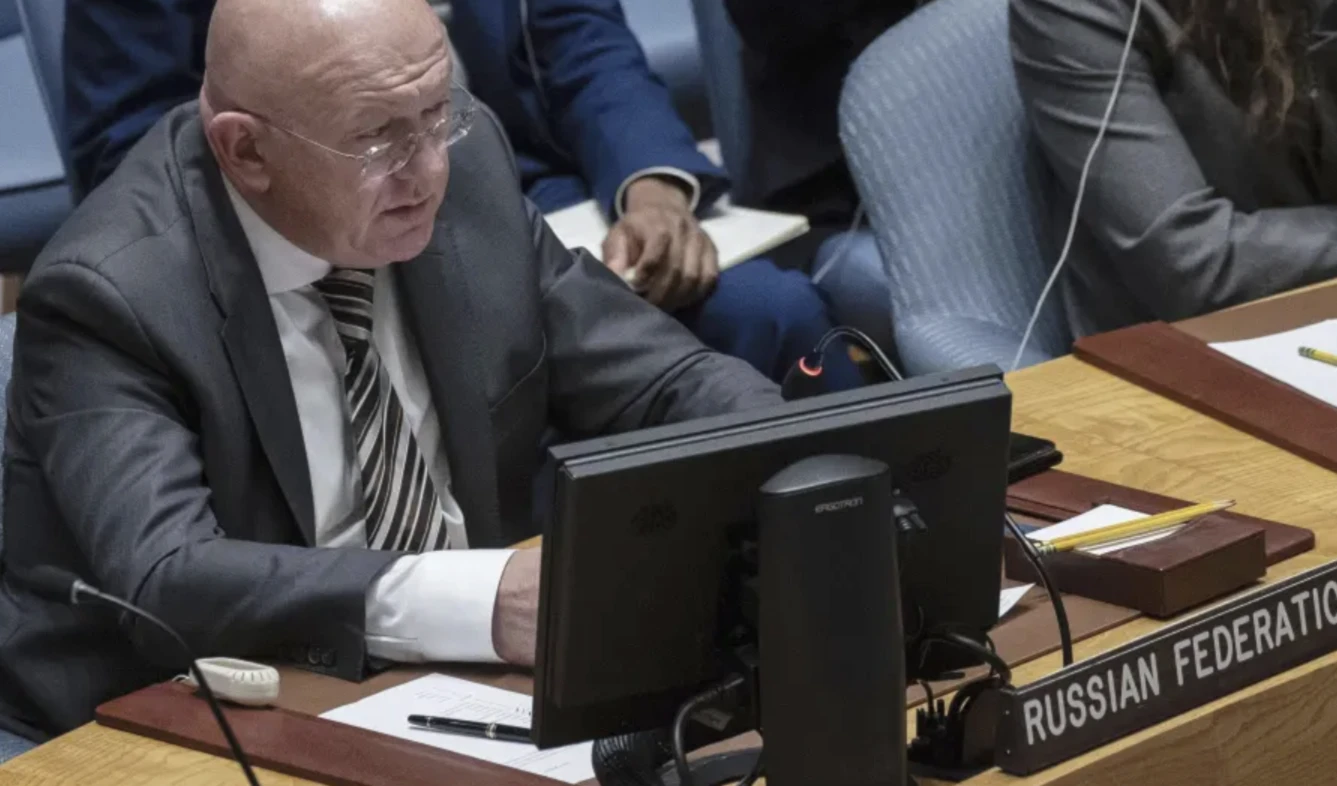57 Gaza children died from effects of malnutrition since March: WHO
Nearly the entire population of Gaza is facing famine due to a prolonged aid blockade, collapsing health services, and the deliberate obstruction of food and medical supplies.
-

Palestinian children sit in their family tent after their mother returned empty-handed from trying to receive donated food at a community kitchen in Khan Younis in southern Gaza, on May 9, 2025 (AP)
At least 57 Gaza children have perished from the effects of malnutrition since the aid blockade began on March 2, according to the World Health Organization (WHO), which cited figures from the Palestinian Health Ministry on Tuesday.
Speaking at a UN press briefing in Geneva, WHO representative for the West Bank and Gaza, Richard Peeperkorn, described the crisis as “one of the world’s worst hunger emergencies,” driven by what he called the “deliberate obstruction” of humanitarian aid, including food and medicine.
The severity of the situation is underscored by the latest findings from the Integrated Food Security Phase Classification (IPC), which now places the entire population of Gaza, approximately 2.1 million people, at critical risk of famine following 19 months of war, mass displacement, and aid restrictions.
Between April 1 and May 10, 93% of Gaza’s population (1.95 million people) were classified in IPC Phase 3 or above, indicating food crisis conditions or worse. This includes 244,000 people in IPC Phase 5 (catastrophe), the highest level of food insecurity, and 925,000 in Phase 4 (emergency).
Peeperkorn warned that if the current conditions persist, nearly 71,000 children under five could become acutely malnourished in the next 11 months, also emphasizing that around 17,000 pregnant and breastfeeding women are now at serious risk.
Last week, the UN warned of complete depletion of malnutrition prevention supplements, with spokesperson Stephanie Tremblay citing a situation that is growing "worse by the day."
Tremblay said the UN's "colleagues working to prevent malnutrition report that there are no more malnutrition prevention supplements left in stock in Gaza."
Peeperkorn cited the IPC study to Anadolu, saying, "If this situation persists, half a million people are at risk of starvation. One million people will be severely affected over the coming four or five months, and another half a million will be moderately affected."
Vicious cycle of hunger and disease
He emphasized that Gaza’s population is caught in a “dangerous cycle", in which malnutrition weakens immune systems, disease spreads rapidly due to a lack of clean water and sanitation, and access to healthcare is nearly nonexistent. Vaccination rates have dropped sharply, and risks to child safety are escalating.
"Without enough nutritious food, clean water, and access to health care, an entire generation will be permanently affected," he warned, pointing to stunted growth, delayed cognitive development, and long-term health complications.
The WHO is also struggling to keep 19 malnutrition treatment centers running amid rapidly depleting supplies. Currently, available stock can treat only 500 children, "a fraction of the urgent need."
Peeperkorn renewed calls for an immediate end to the blockade, the protection of health services, the release of all captives, and a ceasefire that can pave the way for "lasting peace".
Starvation by siege
He emphasized that malnutrition is not usually the direct cause of mortality in such emergencies. "You normally don't die from starvation. You die from the diseases associated with that," he added, recalling sights of children suffering from pneumonia and gastroenteritis in packed hospitals, exacerbated by hunger and a lack of clean water.
He urged "diverse food supplies" to be allowed into the Strip, with the simultaneous rebuilding of infrastructure, including bakeries, desalination plants, and medical centers.
He also highlighted that no WHO aid trucks have entered Gaza since March 18, with 31 trucks currently stranded in El-Arish, unable to move due to the continued blockade.
Medical evacuations remain “extremely limited and challenging,” he added.

 4 Min Read
4 Min Read










